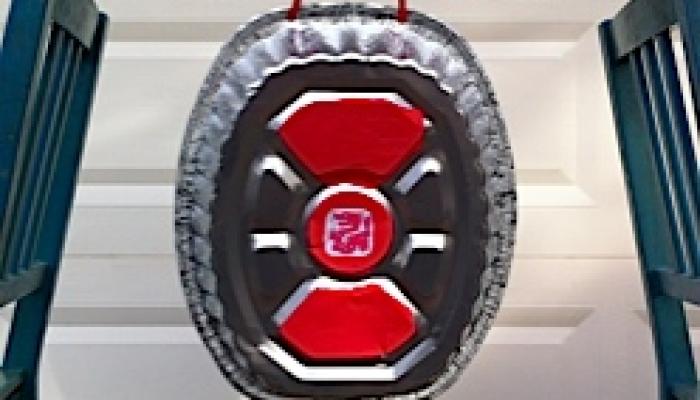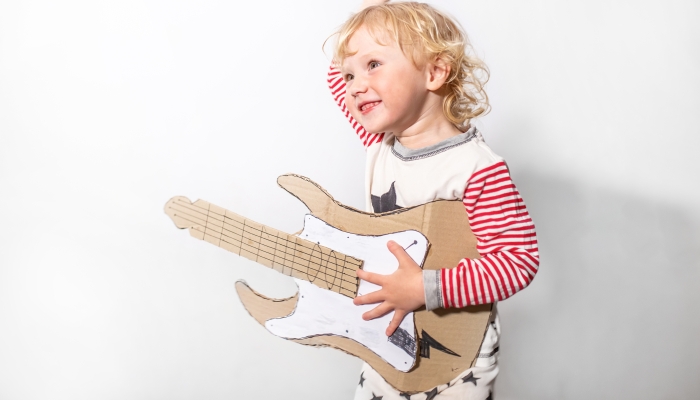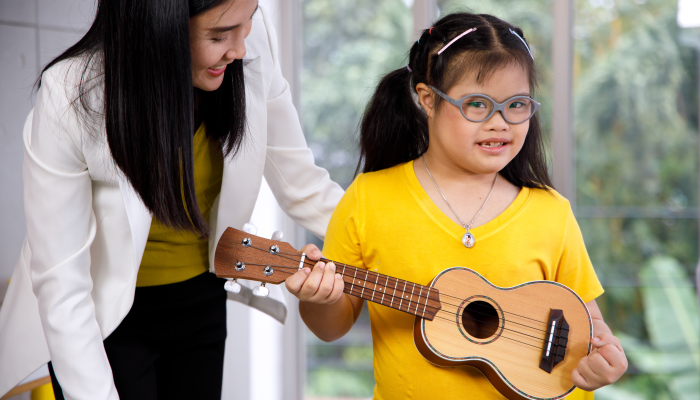Make Your Own Gong!

Bang a gong and everything around you stops!
Setting up a homemade gong is a fun and empowering way to allow a young child to play with music or mark special times in the day – such as dinnertime, time for school, bedtime etc. With its origin in Ancient China, it’s said that some gongs were so amazing that they could be heard 50 miles away!
If you haven’t taken a close look at a gong lately, check out the picture to the left. It’s mainly a metal circle suspended from a stand and struck with a mallet or beater.
So how can you make that at home? The supplies you’ll need can be found around any household. You’ll need a disposable metal turkey roasting pan, a large cake pan or a pie tin. Remember, the larger your gong, the better the sound. To hang your gong, get a cardboard tube from a roll of wrapping paper, a long straight stick or a broomstick. Your stand can be made from two chairs. To put your instrument together, you can use pipecleaners, yarn or colorful string.
Putting it All Together
Assembling the gong is simple. Just poke two holes in your metal pan several inches apart and thread a pipecleaner through each one. Twist the pipecleaner into a circle and the metal pan will hang perfectly on the stick or cardboard tube. If you’re using yarn, use as much as you need to hang your gong to the length that you desire.
Then you can decorate! Textured fabric paint will adhere to metal pans to make a nice design – just let it dry before touching. You can add puffy stickers, scraps of felt, glue string or any other tactile crafts you can think of.
 You can decorate your gong with a Chinese theme, like the dragon for the year of the dragon. You can even find your birth year and add it to the gong or just get creative and make your own totally individual creation (Ivan designed a “party gong” to beat at his birthday party).
You can decorate your gong with a Chinese theme, like the dragon for the year of the dragon. You can even find your birth year and add it to the gong or just get creative and make your own totally individual creation (Ivan designed a “party gong” to beat at his birthday party).
What about the stand? The easiest way to make one is to put two chairs back to back, a few feet apart. Hang the cardboard tube or stick on top of the chairs and your gong should be the perfect height for a young child!
The last thing you need is to make a beater or mallet – the stick that will strike the gong. For this, I recommend a wooden dowel about 12 to 18 inches long, but you can also use a stick, an unsharpened pencil or a chopstick. Wrap one end with electrical tape in the shape of a bulb. This will make a nicer sound on the gong and will prevent it from breaking the metal.
Playing the Gong
Encourage your child to explore the sound of the gong. Tap softly. Strike harder. Is the sound different? Try striking the edges. What does that sound like? This is a good way of showing how all instruments can have slightly different voices when they are played by someone who gets to know them.
If you’d like to have step by step instructions along with a chart of birth years from Chinese Astrology, you can find download one by clicking here.
Award-winning children’s performer, Daria (Daria Marmaluk-Hajioannou) has five CD’s that have won national honors. She has the most awesome job of traveling the world to sing for kids and peace. Her website, located at dariamusic.com, was given a 2009 Parents Choice Award for its musical and cultural content.
Related Posts

Music Play
5 Fun DIY Musical Instruments for Kids
Looking for a rainy day activity you can do on a budget? Get your little rock stars into these easy, crafty DIY musical instruments with stuff you have at home.

Autism, Music Play
6 Ways Music Therapy Can Support Children With Autism
By harnessing the power of music, autistic children can develop communication, social, emotional, cognitive, and motor skills. Here’s how!

Music Play
Music and Movement: Enhancing Preschool Learning Through Songs
Music and movement activities for preschoolers can help enhance their cognitive skills and brain development while developing social, emotional, and academic skills.